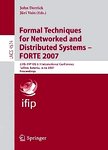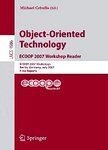版权所有:内蒙古大学图书馆 技术提供:维普资讯• 智图
内蒙古自治区呼和浩特市赛罕区大学西街235号 邮编: 010021
T=题名(书名、题名),A=作者(责任者),K=主题词,P=出版物名称,PU=出版社名称,O=机构(作者单位、学位授予单位、专利申请人),L=中图分类号,C=学科分类号,U=全部字段,Y=年(出版发行年、学位年度、标准发布年)
AND代表“并且”;OR代表“或者”;NOT代表“不包含”;(注意必须大写,运算符两边需空一格)
范例一:(K=图书馆学 OR K=情报学) AND A=范并思 AND Y=1982-2016
范例二:P=计算机应用与软件 AND (U=C++ OR U=Basic) NOT K=Visual AND Y=2011-2016


Conceptual modelling is fundamental to the development of complex systems, because it provides the key means of communication between systems developers, end-users and customers. Conceptual modelling provides languages, methods and tools to understand and represent the application domain; to elicit, conceptualise and formalise system requirements and user needs; to communicate systems designs to all stake-holders; to formally verify and validate system designs at a highlevel of abstraction; and to minimise ambiguities in system development. Initially, conceptual modeling mainly addressed data-intensive information systems and contributed to data modelling and database application engineering. the area of conceptual modeling has now matured to encompass all kinds of application areas such as e-applications (including e-business and e-learning), web-based systems (including the semantic web and ubiquitous systems), life sciences and geographic applications.
High-quality tutorials are a long-standing tradition of the ER conferences. they complement the depth-oriented accepted paper sessions and keynote talks by providing conference participants with broad overviews of emerging fields or clear syntheses of results in existing fields. For ER 2007, we invited Olga De Troyer, Frederic Kleinermann, Bram Pellens, and Wesley Bille (Vrije Universiteit Brussel), Martin Doerr, Christian-Emil Ore, and Stephen Stead (FORth), Dirk Langemann (University of
电话和邮箱必须正确填写,我们会与您联系确认。
版权所有:内蒙古大学图书馆 技术提供:维普资讯• 智图
内蒙古自治区呼和浩特市赛罕区大学西街235号 邮编: 010021

暂无评论